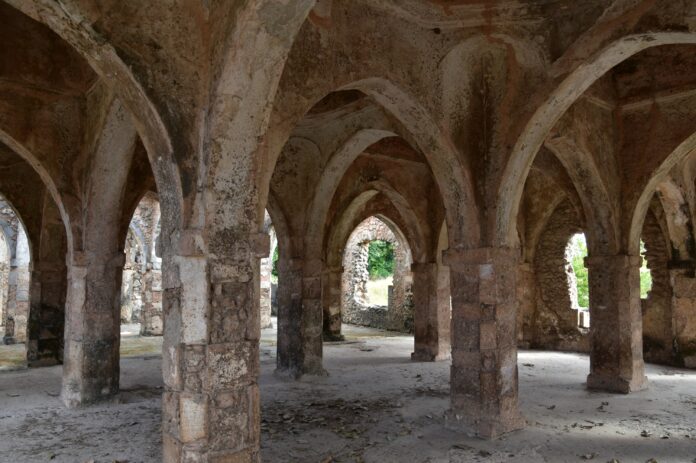The East African coast is a region steeped in history, culture, and architectural marvels. Among its most iconic features are the Swahili stone houses, which stand as enduring symbols of the region’s rich heritage.
These structures, found in ancient towns such as Lamu, Zanzibar, Kilwa, and Mombasa, are not just buildings but living testimonies to the Swahili civilization’s ingenuity, cosmopolitanism, and resilience.
Historical Context: The Swahili Coast and Its Global Connections
The Swahili Coast spans 3,000 kilometers along the Indian Ocean, from Somalia to Mozambique. By the 8th century, it became a global trade hub, linking Africa with Arabia, Persia, India, and China. Merchants traded gold, ivory, spices, and slaves, fostering the Swahili culture—a blend of African, Islamic, and Asian influences.

Between the 13th and 16th centuries, wealthy merchants built Swahili stone houses to display their status. These grand, durable homes served as both residences and commercial centers, where trade deals were made and goods stored.
Architectural Features: A Blend of Form and Function
Swahili stone houses are renowned for their distinctive architectural style, which reflects both practicality and aesthetic sophistication. Here are some key features:
- Coral Stone Construction
The primary building material was coral stone, quarried from the reefs along the coast. This material was ideal for the region’s hot and humid climate, as it provided natural insulation, keeping the interiors cool. The coral blocks were often coated with lime plaster, giving the houses a smooth, white appearance that gleamed in the sunlight. - Intricate Carvings and Decorations
Swahili houses are adorned with elaborate carvings, particularly around doors, windows, and arches. These carvings often feature geometric patterns, floral motifs, and Quranic inscriptions, reflecting the Islamic influence on Swahili culture. The doors, in particular, are masterpieces of craftsmanship, often made from heavy, imported teak or mahogany and studded with brass or copper. - Inner Courtyards
A hallmark of Swahili architecture is the central courtyard, or sahn, which serves as the heart of the home. This open space provides ventilation and natural light, creating a serene and private environment. The courtyard often features a well or fountain, adding to the sense of tranquility. - Multi-Story Design
Many Swahili stone houses are multi-storied, with the ground floor used for storage or business activities and the upper floors reserved for living quarters. This design not only maximized space in densely populated towns but also allowed residents to catch the ocean breeze and enjoy panoramic views. - Mashrabiya and Baraza
Swahili houses often include a mashrabiya (latticed balcony) and a baraza (stone bench) along the exterior walls. The mashrabiya provided privacy for women while allowing them to observe the outside world, while the baraza served as a social space where residents could interact with neighbors and passersby.
Cultural Significance: More Than Just Homes
Swahili stone houses were more than just places to live; they were expressions of identity, status, and cultural values. Here’s how they reflect the Swahili way of life:
- Symbols of Wealth and Prestige
Owning a stone house was a mark of prosperity and social standing. The grandeur of these homes reflected the owner’s success in trade and their connections to the wider Indian Ocean world. - Centers of Community Life
These houses were often the focal points of social and religious activities. They hosted weddings, religious ceremonies, and community gatherings, reinforcing the bonds of kinship and neighborliness. - Cultural Fusion
The architecture of Swahili stone houses embodies the region’s multicultural heritage. The use of coral stone and courtyard designs reflects African traditions, while the carvings and inscriptions showcase Islamic artistry. The incorporation of Indian teak and Chinese porcelain further highlights the global influences that shaped Swahili culture. - Resilience and Adaptation
Despite centuries of change, including colonization and modernization, many Swahili stone houses have endured. They stand as reminders of the resilience and adaptability of the Swahili people, who have preserved their cultural heritage while embracing new influences.
A Living Legacy
The Swahili stone houses along the East African coast are more than just relics of the past; they are living monuments to a vibrant and dynamic culture. They tell the story of a people who thrived at the crossroads of continents, embracing diversity and innovation. As we marvel at their beauty and craftsmanship, we are reminded of the importance of preserving these treasures for future generations. By doing so, we honor not only the Swahili civilization but also the enduring spirit of human creativity and connection.

